Alessandra Cipriani-Detres, NCAN Program Associate
With the school year having started, school counselors and advisors are gearing up to support their next class of high school seniors’ postsecondary plans and endeavors. One of the first items students and families will check off the box this fall is completing their FSA ID. This will allow them to submit their FAFSA when it opens on December 1. Given the average student to counselor ratio in the US is 385:1, it is nearly impossible for advisors to keep track of every student’s FAFSA progress. This is especially problematic when advisors’ time is stretched thin, which can result in some students falling through the cracks.
One way to minimize the risk of leaving students behind is by providing counselors with access to student-level FAFSA completion data. This data can tell counselors specific information like if, and sometimes when, a FAFSA was submitted, completed, selected for verification, and more. It can allow counselors and schools to measure FAFSA completion progress, conduct outreach and follow ups to students and families, and devote more time to the students who need the most support.
A survey conducted by NCAN last year found that of 32 states, 81% of practitioners in those states were able to see indicators as to whether or not FAFSAs were completed, submitted, or not submitted. While this percentage is high, only 59% of practitioners are provided with data that shows when a FAFSA has been flagged for verification or is missing a student’s or parent’s signature. The FAFSA verification rate is three times higher for students who qualify for federal need-based Pell Grants (although verification rates were relaxed for the 2024-25 award year), and not having access to data about the students who need follow-up to complete the verification process exacerbates this inequity.
So, how do we make sure our data ducks are in a row before it starts to feel like winter and December 1 arrives? Here are some examples as to what states and schools across the nation do to ensure no student is left behind when it comes to completing their FAFSA this year.
Determine who needs to sign student-level data-sharing agreements
When it comes to student-level data, one of the biggest hurdles faced by individuals and institutions anywhere is the disconnect between who has permissions for which data. Iowa College Aid overhauled how it shares student-level FAFSA data by working with their legal team and the U.S. Department of Education who all determined that student-level data-sharing agreements with their agency only needed to be signed by regional AEA’s (Area Education Agencies), who, in turn, have data-sharing agreements with each of the schools in their region. This narrowed the number of agreements from 343 to 9 AEA-level agreements.
Create a state FAFSA completion dashboard in tandem with NCAN’s FAFSA Tracker
Access to student-level data might not go very far if it isn’t put into a format that makes sense and is visually appealing to all audiences. One way the California Student Aid Commission addressed this issue is through their Race to Submit Dashboard, which shows the percentage of completed FAFSA/CA Dream Act applications and Cal Grant Award applications at the state, county, and district levels. NCAN’s FAFSA tracker also includes a leaderboard that ranks the percentage of seniors who have completed a FAFSA. The California FAFSA data experience is straightforward, clearly laid out, and useful for practitioners.
Ensure all advisors can access student-level data
Unfortunately, stories where only one person per school district is allowed access to student level FAFSA completion data are far too common. Milwaukee, for example, has more than a dozen high schools, and yet at one point only one (or maybe two) users for the entire district were authorized to see student-level FAFSA completion data. This barrier creates more work for those who do have access to the data to get it to the advisors who need it the most. When designing data sharing agreements and policies for districts and schools to receive student-level data, states should work to ensure student privacy while providing access to practitioners in a fashion that realistically helps them drive their important work forward.
As the school year unfolds, it is crucial for counselors and advisors to prioritize access to student-level FAFSA data to support high school seniors in their postsecondary journeys. By establishing streamlined data-sharing agreements, developing intuitive dashboards, and ensuring all advisors can access this critical information, advisors can better track and assist students in completing their FAFSAs and accessing the financial aid for which they are eligible. Let’s commit to not leaving any student behind this upcoming FAFSA season!


